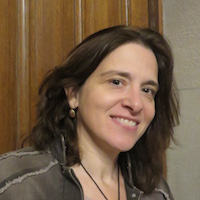
“Find a place inside where there’s joy, and the joy will burn out the pain.” ~ Joseph Campbell
~
I believe in the adage, “Where thoughts go, energy follows.”
In other words, positive thoughts beget positive energy. Similarly, negative thinking perpetuates negative energy.
I don’t reject negative thoughts or emotions when they come up, but I do try to pause and consider whether I want to put them out in the world. My preference is to actively choose to place my awareness on the good, and shift my focus away from those negative thoughts.
By focusing on what is happening that is good, I’m better able to move in the right direction, however small those movements might be. This strategy is generally more effective and productive than focusing on what is negative or pouring my energy into stopping the “bad.”
When the November election came, for the first time in my five decades of life, I feared that our fundamental values may be irretrievably damaged. I now see policy moving in a direction that will cause great harm to countless people and, most importantly, to the planet.
The tension between staying informed and feeling pummeled by relentless negative events has never been more acute—and emotionally overwhelming.
I find myself in a quandary, asking, “At what point does staying positive tip into a stance that is ignoring the reality of what is happening?’ Likewise, “When does resisting take on a form of negative noise that, instead of being a force for change, adds to the angry crosstalk that got us to this painful, polarized place?”
The answer to these questions is frequently unclear.
How do I live in this tension—make choices and act in this reality—without losing my capacity to focus on what is possible and put positive energy out into the world?
I practice joy.
Joy, even in the darkest of times, is a powerful form of resistance.
I say “practice” because it is a practice—it takes work. These days, joy is something that I have to consciously engage in. When external conditions diminish my capacity to experience joy, I need to seed the conditions to cultivate it. I actively make room for it.
Practices that lay the groundwork for joy—like being in nature, exercising, practicing self-care, and cultivating connection—can offer great assistance in these challenging times.
Here are some practices that have I have found helpful in opening up to joy:
Draw inspiration from people who have persisted and changed the world for the better.
In the past six months, I have listened to the Nobel Peace Prize acceptance speeches of the Dalai Lama and the joint acceptance of Nelson Mandela and F.W. de Klerk.
I’ve read acceptance speeches of Nobel recipients for literature, including Orhan Pamuk and Nadine Gordimer.
Nobel-winner Doris Lessing writes with wisdom in “Prisons We Choose to Live Inside,” and Aung San Suu Kyi’s “Freedom from Fear” still inspires the second time around.
Find your own list of wise and courageous forebears who resisted and persisted. Doing so helps us feel connected to a larger trajectory of positive change, creating a sense of purpose—a precursor for joy.
Prioritize awareness of qualitative shifts in the right direction.
The past two decades have seen seismic change in awareness and openness. It is important to not lose sight of this. One shift that stands out to me is the proliferation and interconnection of environmental and human rights movements which have previously operated separately. New, powerful models of engagement are forming outside of traditional policy-making models.
Understanding the forces that are pushing for profound, meaningful change provides another source of purpose and joy.
For inspiration, read Rebecca Solnit’s “Hope in the Dark: Untold Histories, Wild Possibilities.”
Get outside an imagined progressive bubble—and make unlikely connections.
After the election, I was hungry to connect with neighbors I otherwise wouldn’t know. And—here is the big stretch for me—I was eager to stop wondering who they voted for. Instead of their voting record, I chose to care about how they interact with me and talk about others.
I live in Brooklyn, New York, and have a place in a bucolic town in the Catskills. Recently, I joined Ken, a dairy farmer who farms across from my house, at Woody’s diner at the ungodly hour of 6:00 a.m., after the first milking and before other work started. (Farmers are far busier than most city dwellers.)
There, I had the opportunity to meet other farmers. We made slightly awkward, yet sincere and lovely conversation.
They are kind and, like people in Brooklyn, a little wary of newcomers who drive up real estate prices without participating in community. They were curious about me and, though reserved, were willing to talk about their work and lives. And they were generous, picking up my tab when I wasn’t looking.
Now, when I wave to a farmer on a tractor and he waves back, I feel a little more connected to the land and my home—another precursor for joy.
~
Joy is not just about lightness and buoyancy. In dark times, we sometimes must actively cultivate and open ourselves to it. Joy creates an expansive internal state that keeps us tapped into what is possible—even when what is here and now is painful.
Joy is a wonderful, generative form of resistance. It takes effort and practice, yet offers immediate rewards.
~
~
Author: Lisa Kentgen
Image: Eli Defaria/Unsplash
Editor: Callie Rushton










Read 0 comments and reply